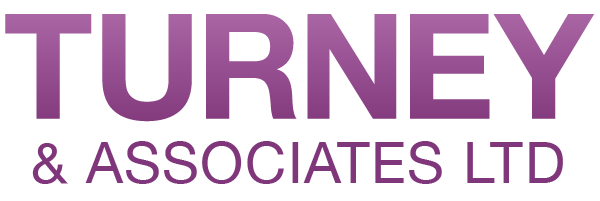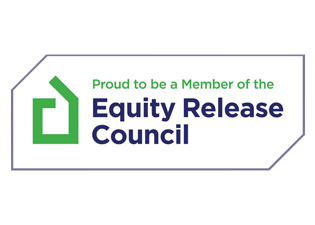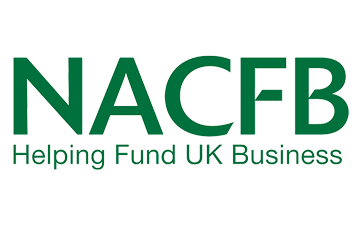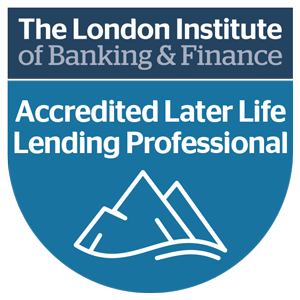Buying property to let as a long-term investment or to generate a regular income has become an increasingly popular option over recent years, the demand from would-be tenants for quality rental property continues to grow in many areas of the country.
On your side in buy-to-let
If you’re planning to develop a substantial portfolio as a professional landlord, or you’re just thinking of a fairly modest investment for the future, you’re almost certainly going to need finance in the form of a buy-to-let mortgage.
At Turney & Associates we specialise in arranging finance for the residential letting industry. We’re ready to help you achieve your goals.
Helping you get it right
As responsible brokers, we’d like to help you establish and run your buy-to-let business successfully and fairly for all concerned. That means careful planning of finances, taxation, marketing, maintenance and general property management. It’s also important that you comply with all of the legal requirements of being a landlord.
This guide has been prepared to answer many of the most common questions that arise when would-be landlords first consider investing in buy-to-let. It should work as a sound introduction to the business. However, you’re likely to have specific questions relating to your property, locality and circumstances, and we would be delighted to assist you directly.
Cost and Income
When you’re investing in Buy to Let, you’ll naturally need to add up the costs of buying and running your property so that you can calculate the potential returns from your rental income.
There are three main areas where costs arise – Purchase, Mortgage and Running costs.
Purchase costs
- Deposit – if you’re funding your purchase with a mortgage, you will still need to find a deposit from elsewhere. Typical buy-to-let mortgages are available for up to 75% loan-to-value, but up to 85% may be possible (subject to criteria) so it’s possible you will need to find 15-25% of the property value.
- Arrangement fee – this can usually be added to your mortgage, which means you will pay interest on it.
- Preparing your property for rent – depending on the condition of the property you intend to buy-to-let, you may have to do structural or decorative work. You’ll also have to budget for furniture and appliances if you intend to let your property furnished.
Other costs will include legal fees, stamp duty land tax (if appropriate) and a survey fee.
Mortgage costs
Mortgage interest payments are likely to be your largest ongoing costs, and most lenders will want to ensure that the rental you earn from letting your property easily covers your mortgage commitment. Many lenders look for rental income of at least 120% up to 180% of Interest Only mortgage payments. This provides a safeguard against periods when your property isn’t let, and should help you meet the costs of running your property.
Running costs
- Property maintenance – such as repairs and maintaining the safety of gas and electrical appliances.
- Insurance – specialist buildings and contents insurance for landlords is essential. In addition, some insurers will also provide rent guarantee insurance.
- Service charges and ground rents – for Leasehold properties.
Your tenant will normally be responsible for other property related costs such as council tax, a TV licence and utilities. The tenancy agreement should clearly set out who is responsible for each of these payments.
Letting Agent services & charges
If you’re new to the buy-to-let market, have several properties, live some distance from your property or you have other demands on your time, it could make sense to use a reputable letting agent. Naturally the fees or commission you pay to an agent will reduce your profit, but it may save you a great deal of time and trouble.
An agent can be a great source of advice, and it’s worthwhile speaking to local agents who know your area before you buy. A good letting agent will market your property, select tenants, take up references and credit checks, compile inventories and tenancy agreements, collect rent and deposits, and generally inspect and manage the property.
Your income
Your main source of buy-to-let income will be rent. It is vitally important that you get a true sense of likely rental levels by speaking to local estate agents and generally researching the local rental market.
You’ll also be interested in the potential resale value of your property. Therefore the local market, employment opportunities, transport links, schools and other amenities will be important considerations.
Your obligations to the tax man
Tax is payable on the profits you make from letting your buy-to-let property. It’s normally calculated on the gross annual rental income, less any allowable expenses incurred as a result of renting out the property, as well as any other allowances that you’re entitled to. If you lose money in any one year, you should be able to carry the loss forward and set it against profit you make in subsequent years.
As a landlord, you’ll have to submit your rental income on your tax return, so it’s vital you keep detailed records of the rental payments you receive as well as all the expenses you incur. It’s standard practice for a landlord to employ an accountant to ensure HM Revenue and Customs are properly advised – and to make sure that all allowable expenses are identified so you can offset them against your profit. Although using an accountant will cost money, the fees you pay for the service will be tax deductible, and the help you’ll receive could easily save you money in the long run.
Expenses which can normally be deducted from your income to calculate your profit include: utility bills, insurance, mortgage interest (until 2021), maintenance and repair (but not improvements), professional fees, cost of services like cleaners and tradesmen and other expenses such as advertising for tenants.
Sale proceeds and tax
If and when you decide to sell your buy-to-let property, the proceeds from the sale will be subject to capital gains tax. Calculating this tax liability can be quite complicated and it’s almost certainly worth paying for the expert advice of a qualified Accountant. Further information on taxation and allowances can be found by visiting the HM Revenue and Customs website at: www.hmrc.gov.uk
Landlord obligations
As a buy-to-let landlord, you have obligations to your tenants, and must comply with some legal and financial rules. It’s very important that you understand these obligations from the outset, and we would always recommend that you seek professional help from solicitors, accountants and others at the appropriate time.
Tenancy agreements
A tenancy agreement is a contract between landlord and tenant. It is most likely to be an Assured Shorthold Tenancy agreement (AST) regulated by the Housing Act 1988 as amended, and provides limited security of tenure to the tenant. Although the content varies, your tenancy agreement should cover:
- Details of the parties involved
- The date that the tenancy began
- The duration of the tenancy
- Details of the initial deposit that the tenant should pay and how it is to be protected
- Details of the monthly rent, when it is due and how it is to be paid
- The length of notice that the tenant and landlord need to give to end the tenancy
- Details of the tenant’s obligations while renting the property
- A provision confirming that the tenant is not liable for fair wear and tear to the property
The tenancy agreement should be signed by the tenant and the letting agent, or the landlord if no agent is involved. It can subsequently be changed if both parties agree. Unless you have considerable experience already, it’s a good idea to seek advice from a letting agent or legal adviser on the terms of the proposed tenancy agreement.
Initial deposits
An initial deposit should cover you against missing items, or any damage caused by the tenant.
Deposit protection schemes
Tenancy Deposit Protection (TDP) schemes guarantee that tenants will get their deposit back at the end of the tenancy (however, the tenant is still obliged to meet the terms of the tenancy agreement and must not damage the property).
Landlords are legally required to protect deposits on tenancies which began after 6 April 2007, it’s good practice for landlords to protect deposits in all circumstances.
If you don’t protect your tenant’s deposit you could be taken to court. You could be required to repay the deposit plus a sum equivalent to three times the amount, and you may not be able to seek possession of your property.
Tenancy Deposit Protection schemes do not cover holding deposits.
Types of scheme
There are two types of Tenancy Deposit Protection schemes and you should seek professional advice on what’s the best for you:
- Custodial – the Deposit Protection Service provides the only custodial scheme. It holds the deposit in a bank account and returns it at the end of the tenancy to the person who is entitled to it. This scheme is free to landlords and letting agents.
- Insurance based – where you or your agent holds the tenant’s deposit and pays a fee to insure it against default. My Deposits and Tenancy Deposit Scheme are insurance-based providers.
Landlord insurance
Standard home insurance doesn’t normally pay out when a property is let, so it’s important that you arrange a specialist policy. As well as insuring the building and any contents that belong to you, landlord insurance often provides legal cover which could help in disputes. Many policies also include other valuable cover like:
- Rent guarantee cover – helps protect you against a tenant failing to pay rent, or if something unexpected happens to make letting impossible.
- Landlord liability cover – this can protect you against large compensation claims arising from an injury caused by a defect to your property. Your tenants will be responsible for insuring their own personal possessions. At Turney & Associates, we are happy to provide advice to our clients. We can source the best product and arrange cover for you.
Landlord repair and maintenance obligations
The Landlord and Tenant Act 1985 covers the three main areas of your responsibility as a landlord under an assured shorthold tenancy.
Repair
You must keep the structure and exterior of the property in a good state of repair. You have final responsibility for ensuring your property is safe and fit for use, and you must ensure that all necessary repairs are carried out properly. Many letting agents will include this as part of their service.
Gas and electrical safety
As a landlord, you’re responsible for the safety of gas installations and appliances. You must arrange an annual safety check and keep proper records. There are also regulations covering the safety of electrical installations and appliances.
Though not currently compulsory in all properties, it makes extremely good sense to fit carbon monoxide and smoke detectors in all let properties. As a landlord, you must also keep up to date with changes in relevant legislation – it’s your responsibility to find out when your obligations change.
Fire safety & furnishings
You must ensure that any soft furnishings and fittings you provide comply with the relevant standards for fire safety. It’s a good idea to seek independent advice on your legal responsibilities in this area.
Ending a tenancy
At the end of an Assured Shorthold Tenancy (AST) you have an automatic right as a landlord to possession of your property as long as you’ve given the tenant two months notice to vacate the property.
If the notice period expires and the tenant has still not left the property, you will need to start the process of eviction through the courts. You can’t forcibly remove a tenant without an eviction order.
If you wish to seek possession under Assured Shorthold Tenancy because your tenant has not paid the rent, or if they’ve broken other terms of the agreement, you’ll need to use one of the reasons or ‘grounds’ for possession specified in the Housing Act 1988.
You will have to seek independent legal advice on bringing an AST to an end.
There are certain criteria that are applied to all applications for buy-to-let borrowing.
We are happy to answer any questions and explain anything relating to your circumstances.
More buy-to-let mortgage information Contact us
More useful guides





